Submissions
Author Guidelines
Abstract & Keywords:
The abstract should be between 200-350 words. It should be written in a single paragraph, and should not contain references or mathematical notations. The number of the keywords should be at most 6.
Length of the paper and margins:
The maximum length of a paper is limited to 10000 words. Write your paper in size of A4, set the margins (top, bottom, right, and left) to 2.54 cm.
Note that violating the length limitation of a paper will result in rejection.
Font Specification and Spacing:
The main text of the paper should be written using Times New Roman font with 12-point font size. The paper should be double line spaced. Use 11 point Times New Roman for "Abstract" and “Keywords” and also use 16-point Times New Roman for the title of the paper.
Paragraph format:
All the paragraphs should be indented by 0.75 cm.
Main text:
Divide your manuscript into clearly defined and numbered sections. Subsections must be numbered 1.1 (then 1.1.1, 1.1.2 ...), 1.2, etc. Use font 13-point Bold Times New Roman for the main sections, 12-point Bold Times New Roman for the first subsections, 11-point Bold Times New Roman for the second subsections, and so forth.
Mathematical notations and equations:
All the mathematical notations should be italicized. It would be better to consider a separate sub-section or an appendix in order to describe all these notations (i.e. sets, indices, parameters, and variables) before the mathematical model presentation.
All the equations which are explicitly referenced in the text should be numbered. The equations can be entered using MathType or Equation option available in the Symbols group on the Insert tab in Microsoft Word.
Use the format below for equations.
|
Eq. (1) |
Use in the text |
|
(1) |
Use to number the equation |
Figures and tables:
All the figures and tables should be placed in the center within the text. They should be numbered sequentially, but separately. As a key point, they should be explicitly referenced in the text and should not be placed before they are referenced. The caption of tables should be above them and the caption of figures should be below it. Use 10-point Times New Roman for the captions and contents of the tables and figures.
Use the format below for tables, figures.
|
Figure 1 |
Use in the text |
Table 1 |
Use in the text |
|
Fig. 1 |
Use in the caption |
Use in the caption |
Conclusions and future work:
It is very important that you indicate clearly what you have done and explain the differences existed between your work and previously published works. Outlook is an essential part of a paper. The authors should pay attention to mention it reasonably.
Acknowledgement:
The authors should prepare the acknowledgments section, if needed, after the conclusion section, but before any appendices and references. The acknowledgement section heading is not numbered.
References:
All references cited should consist of published works accessible to the public. They should be cited in Harvard format and the Times New Roman font using 11-point font size. Place the list of references after the appendices. The heading of reference section should not be numbered. Arrange the references by observing alphabetical order.
Check the formats presented below for referring to “Technical report”, “Conference papers”, “Journal papers”, “Books” and “Websites" within the main text.
To cite a reference within the text, use "Number" method with square brackets [ ]. For example, a work done by Yang, Mathur, and Ballou in 2000 would be cited in the following way:
Yang et al. [1].
References to books should include the author’s name; year of publication; title; page numbers where appropriate; publisher; place of publication.
For example:
- Donnelly, R.G., and Lightfoot, R.S., (1996). “Information technology support of strategic management activities”, IEMC 96, Proceedings, 308 – 315, Vancouver, BC.
- Ghiani, G., and Improta, G. (2000). “An efficient transformation of the generalized vehicle routing problem”. European Journal of Operational Research, Vol. 122, No. 3, pp. 11-17.
- Yang, W. H., Mathur, K., and Ballou, R. H. (2000). “Stochastic vehicle routing problem with restocking”. Transportation Science, Vol. 34, No. 1, pp. 99-112.
- Saloner G., Shepard A., and Podolney J., (2001). Strategic management, First ed. Wiley, USA.
Appendix:
If there are any appendices, place them before the reference section and label them with A, B, C, and so forth.
Notice:
The authors can't change or revise their information including name, affiliation, email address, etc. after publishing their paper.
Copyright Policy:
The publication stage will begin when the acceptance letter is sent to the authors. They should sign the agreement form. As a result, the authors assign the copyright to the International Journal of Applied Optimization Studies (IJAOS).
Submission Preparation Checklist
["All submissions must meet the following requirements."]Copyright Notice
Copyright Policy:
All Rights Reserved for International Journal of Applied Optimization Studies (IJAOS).
Privacy Statement
The names and email addresses entered in this journal site will be used exclusively for the stated purposes of this journal and will not be made available for any other purpose or to any other party.



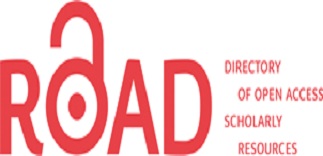
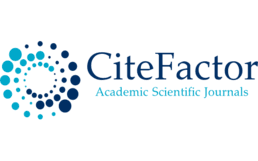
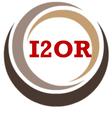
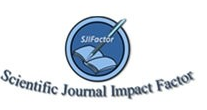
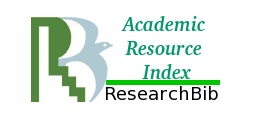





 Telegram
Telegram  Twitter
Twitter Facebook
Facebook  Google Plus
Google Plus  Email
Email  Linkedin
Linkedin 